Edwin's grandfather, Ludwig Daniel Juergens, emigrated from Prussia in the early 1840s. By 1852 he had married Magdalene Helene Koehn and moved from Milwaukee to Chicago, where they had two children - Theodore and Bertha. Magdalene died in 1859 and sometime later Ludwig married Wilhelmine A. Prosch. Together they had four children - Helene, Alfred, Doris, and Ludwig.
The elder Ludwig entered the Chicago workforce as a general painter, and used that experience to get hired in 1864 as paint shop foreman for the Chicago and Northwestern Railroad. His son Theodore had won a scholarship to Porter's Telegraph College after high school, and Ludwig used his influence to land Theodore a job with the Chicago and Northwestern in 1869 as a telegraph operator. Influential or not, Ludwig lost his job in the aftermath of the 1871 Great Chicago Fire and had to survive as a sign painter. His expertise with paints would eventually cause him to team up with Theodore (who had also worked as a sign painter and a decorator) in 1875 to start a large paint manufacturing business on Milwaukee Avenue in Chicago - L. Juergens & Son, Paints.
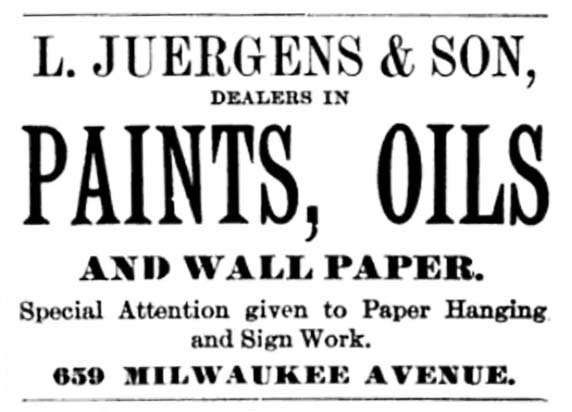
Handy Business Directory of Chicago
They soon expanded into oils and wallpaper, and more. Theodore's sister Bertha married Adolph Kruger the following year and by 1880 he was a partner in the business. Of Theodore's half-siblings not much is known except for Albert, who became an artist of some renown, but only after his father had died. Ludwig disapproved of that line of work—although in 1881 he allowed Alfred to attend the Chicago Academy of Design as long as he still clerked in the family business. After Ludwig passed away in 1883 while on a trip to Berlin, Albert's mother paid his way to Europe to study.
Theodore, now married to Mary Josephine Hemmer, became the sole proprietor of the large business. In 1892, however, Theodore left that all behind and joined the Board of the American Varnish Company as its secretary and by 1905 was the president. Theodore's wife Mary gave birth to Edwin Columbus Juergens (the youngest of four children) in Chicago on August 9 in the year of that city's World's Columbian Exposition of 1893—hence Edwin's middle name.
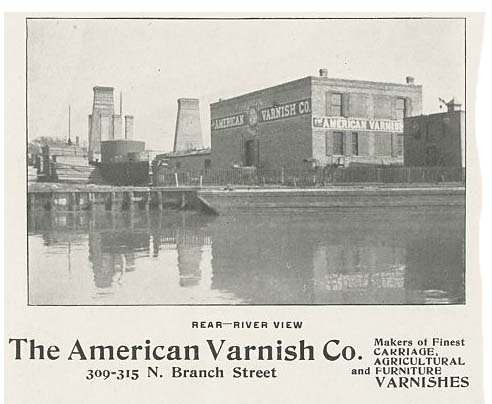
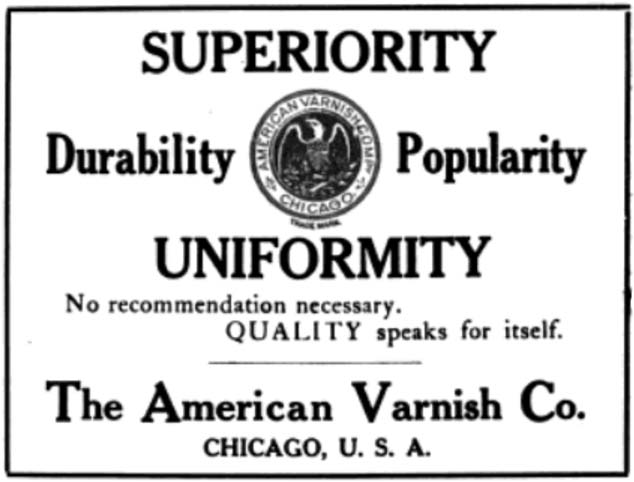
These years saw a rise in the family's fortunes, and Theodore soon moved them into an opulent Queen Anne mansion on Pierce Avenue that he had built in 1894-5. Today the house is divided into three apartments, but from the late 1950s until the early 1970s the Juergens mansion was owned by the Russian Orthodox Church Outside of Russia—also known as the Russian Orthodox Church Abroad—and was consecrated as The Holy Virgin Protection cathedral, with services held in what is now the front parlor of the second-floor apartment. A Russian Orthodox cross still graces the roof to this day.
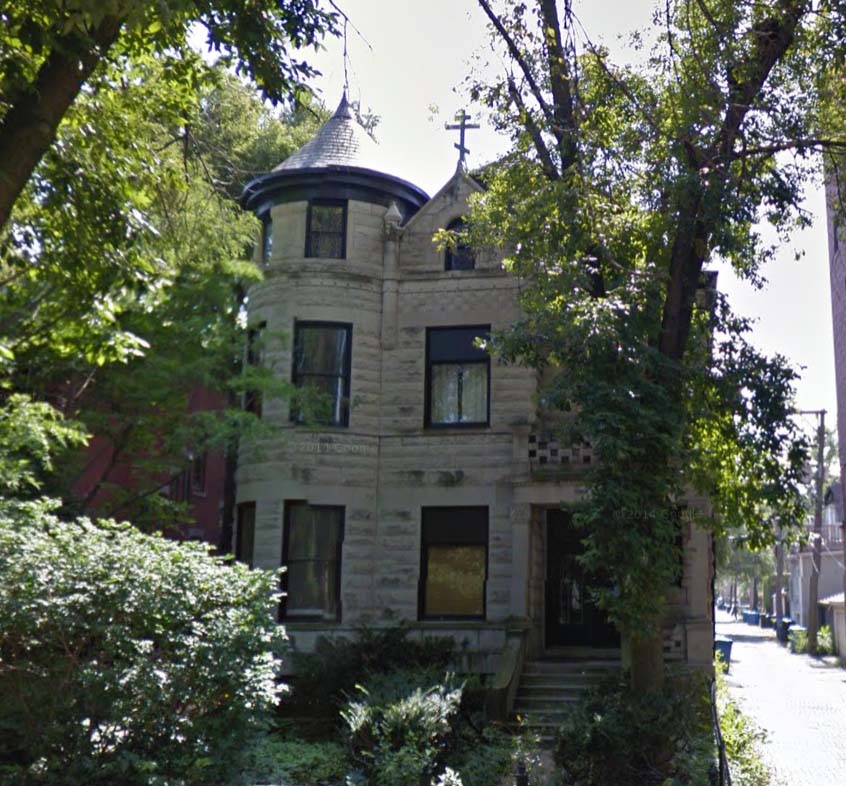
recorded September, 2014. Note Russian Orthodox cross on roof.
In October of 1899, after the dilapidated Division Street bridge to Goose Island was closed, Theodore was one of nine men well-off enough to offer the City of Chicago a loan out of their own pockets for the construction of a new bridge. The city would "pay 6 percent interest on the money until such time as it could repay the business-men." In 1908 Theodore changed careers again, but this time changed industries as well, choosing one that would set the now 15 year-old Edwin on his own career path for the rest of his life. Theodore Juergens joined forces with Jacob Lauth of J. Lauth & Co. to manufacture cars and trucks.
To be continued with more on the Lauth-Juergens Motor Car Company.
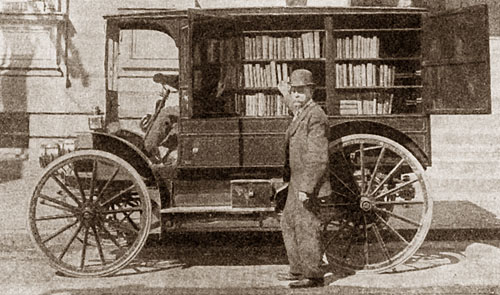
No comments:
Post a Comment